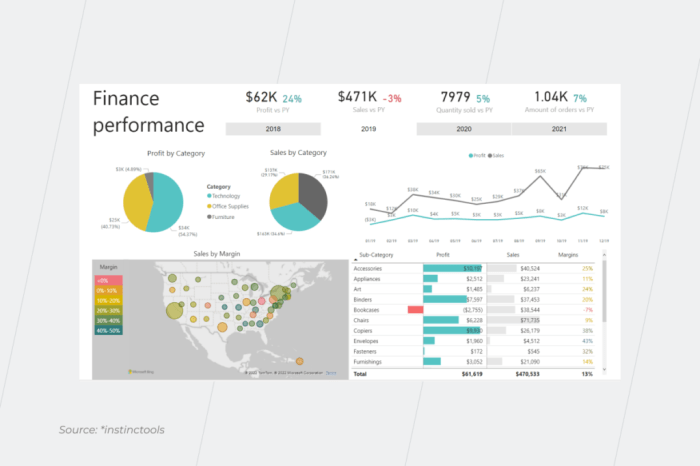Common challenges in SAS business intelligence implementation. This topic is pivotal for organizations aiming to leverage data-driven decision-making through SAS tools. Implementing business intelligence solutions is oftentimes fraught with hurdles that can impede success, from user adoption and organizational culture to technological limitations and data governance. Understanding these challenges is essential for any organization looking to navigate the complexities of SAS BI implementation effectively.
The implementation phase is critical, as it sets the groundwork for how well SAS business intelligence tools will be embraced and utilized within the organization. Factors such as resistance to change, inadequate training, and insufficient IT infrastructure can significantly influence the success of these initiatives. Moreover, ensuring data quality and governance adds another layer of complexity that organizations must address to fully harness the power of their BI systems.
Identifying Key Challenges in Implementation

The implementation of SAS business intelligence (BI) tools can present a range of challenges that organizations must navigate to fully leverage the capabilities of these systems. Understanding these obstacles is critical for ensuring a smooth transition and effective utilization of BI solutions. Various factors, including organizational culture, data management practices, and user engagement, can significantly influence the overall success of the implementation process.One of the primary challenges faced during the implementation of SAS BI tools is related to data integration and quality.
Organizations often struggle with disparate data sources that hinder the seamless amalgamation of information necessary for comprehensive analysis. Inconsistent data quality can lead to unreliable insights, ultimately affecting decision-making processes. Additionally, organizational culture plays a pivotal role in shaping how well BI tools are embraced. For instance, a culture that values data-driven decision-making is more likely to facilitate successful BI implementation, while a lack of understanding or resistance to change among employees can lead to underutilization of these tools.
Obstacles Related to Organizational Culture
Organizational culture can significantly impact the effectiveness of SAS BI tools. A culture that is resistant to change may create barriers to the adoption of new technologies, whereas an open and innovative culture encourages experimentation and utilization of BI tools. The following points illustrate how organizational culture can shape the implementation process:
- Support from Leadership: Strong backing from upper management can foster a culture of acceptance, ensuring that employees understand the value of BI solutions.
- Training and Development: Providing training programs that enhance data literacy among staff can promote a more profound appreciation for BI tools and their benefits.
- Communication: Clear communication regarding the objectives and advantages of BI implementation helps build trust and reduces resistance among team members.
- Incentives: Creating incentives for employees who effectively utilize BI tools can motivate others to embrace the technology, contributing to a more data-driven culture.
Data Integration and Quality Challenges
Overcoming challenges related to data integration and quality is essential for successful SAS BI implementation. Organizations must address the following aspects to enhance data reliability and usability:
- Standardization of Data Sources: Establishing standard protocols for data collection and management across various departments ensures consistency and accuracy.
- Implementing Data Governance Frameworks: This involves creating policies and procedures that dictate how data is handled, which helps mitigate issues related to data quality and integrity.
- Utilizing ETL Tools: Employing Extract, Transform, Load (ETL) tools facilitates the seamless integration of data from disparate systems, enhancing the overall coherence of the BI environment.
- Regular Data Audits: Conducting periodic audits of data sets helps identify and rectify inaccuracies, ensuring that the information utilized for analysis is reliable.
“The quality of data directly affects the quality of insights derived from business intelligence tools, underscoring the importance of rigorous data management practices.”
User Adoption and Training Issues
The successful implementation of SAS business intelligence solutions hinges not only on the technology itself but also on the users who will be operating it. User engagement is critical for harnessing the full potential of these solutions, as the effectiveness of analytics and reporting tools is directly influenced by how well users adopt and employ them in their daily operations.Effective training programs tailored to various user levels are essential for maximizing user adoption.
These programs should consider diverse user backgrounds and skill levels, ranging from technical staff to business users who may have limited experience with analytics. A well-structured training program can significantly enhance user confidence, thereby increasing the likelihood of successful implementation.
Strategies for Effective Training Programs, Common challenges in SAS business intelligence implementation.
Creating a comprehensive training strategy involves several key components that ensure users are adequately prepared to utilize SAS business intelligence tools effectively. The following strategies can facilitate a successful training initiative:
- Role-Based Training: Tailor training to different user groups, focusing on specific functionalities and use cases relevant to their roles. For example, data analysts may require in-depth technical training, while executives might benefit from high-level overviews and dashboards.
- Hands-On Workshops: Implement practical, interactive workshops that allow users to engage directly with the software. This experiential learning approach helps reinforce theoretical concepts and builds practical skills.
- Online Resources and E-Learning: Provide access to online tutorials, documentation, and forums. This offers users the flexibility to learn at their own pace and revisit materials as needed.
- Continuous Support and Mentoring: Establish a support system where users can seek assistance from more experienced colleagues or mentors. This encourages ongoing learning and fosters a collaborative environment.
Resistance points among users can pose significant challenges during the adoption phase. Addressing these resistance points effectively is crucial for ensuring a smooth implementation process. Common resistance factors include fear of change, perceived complexity of the tools, and concerns about job security.
Addressing User Resistance
Understanding and mitigating resistance among users is vital for enhancing adoption rates. Key strategies include:
- Communicate Benefits: Clearly articulate the advantages of using SAS business intelligence tools, such as improved decision-making capabilities and increased efficiency. Users are more likely to embrace change when they understand how it benefits them and the organization.
- Involve Users Early: Engage users in the implementation process from the outset. By soliciting their feedback and involving them in decision-making, users feel more invested in the system and are less likely to resist it.
- Provide Clear Documentation: Offer comprehensive guides and resources that simplify the learning process. Well-documented processes can alleviate concerns about complexity and help users feel more comfortable with new tools.
“User engagement is critical; without it, even the most advanced business intelligence solutions can fall short of expectations.”
Technology and Infrastructure Limitations
The successful deployment of SAS Business Intelligence (BI) systems can be significantly impacted by various technological and infrastructural limitations. These barriers may hinder the overall performance, scalability, and user experience of SAS BI solutions. It is essential to identify these limitations early in the implementation process to mitigate potential issues and ensure a smooth transition to a data-driven decision-making environment.Technological barriers that may impede the successful deployment of SAS BI systems include inadequate hardware resources, outdated software versions, and compatibility issues.
These factors can lead to slow processing times, frequent system downtimes, and inability to handle large volumes of data effectively. Organizations must prioritize their technological infrastructure to align with the demands of SAS BI applications, ensuring that hardware and software components are sufficiently robust to manage anticipated workloads.
Evaluation of Infrastructural Setups
The choice of infrastructural setup plays a critical role in the performance and scalability of SAS BI systems. Different configurations, such as on-premises, cloud-based, and hybrid architectures, offer distinct advantages and limitations. Evaluating these setups involves understanding their impact on system performance, cost-effectiveness, and long-term viability.On-premises infrastructure offers organizations complete control over their data and systems; however, it may require substantial upfront investments in hardware and ongoing maintenance costs.
Cloud-based solutions, conversely, provide flexibility, scalability, and reduced IT overheads, making them attractive for many businesses. The hybrid model combines both on-premises and cloud solutions, allowing organizations to balance control with the scalability offered by cloud services.To ensure robust IT support during implementation, organizations should adopt the following best practices:
- Conduct a thorough assessment of current IT infrastructure to identify gaps and areas for improvement.
- Invest in modern hardware and software that can handle the demands of SAS BI applications effectively.
- Implement regular training sessions for IT staff to keep them updated on new technologies and best practices.
- Establish a dedicated support team to handle any technical issues that arise during and after deployment.
- Regularly review and update infrastructure to accommodate future growth and technological advancements.
“An effective technological infrastructure is crucial for the successful implementation of SAS Business Intelligence systems, impacting performance and scalability directly.”
Data Governance and Compliance Challenges: Common Challenges In SAS Business Intelligence Implementation.

Effective data governance is a cornerstone of successful SAS business intelligence implementation. In today’s data-driven environment, organizations must prioritize the management of data integrity, security, and compliance to foster trust in their business intelligence systems. As organizations increasingly rely on data for decision-making, the role of data governance becomes even more crucial to ensure that insights derived from SAS tools are both reliable and compliant with regulations.Data governance involves a framework that encompasses policies, procedures, and standards that dictate how data is managed and utilized within an organization.
An absence of robust data governance mechanisms can lead to compliance issues that jeopardize not only data security but also organizational reputation. Compliance with various regulations, such as GDPR and HIPAA, requires organizations to meticulously manage data usage and reporting processes to prevent potential legal ramifications.
Compliance Issues Related to Data Usage and Reporting
Compliance with data regulations is essential for mitigating risks associated with data breaches and violations. Organizations need to be aware of various compliance challenges that can arise during SAS business intelligence implementation, which may include:
Data Privacy Concerns
Organizations must ensure that personal data is collected, stored, and processed in accordance with legal requirements. Failure to adhere to privacy laws can lead to significant fines and reputational damage.
Inaccurate Reporting
Data used for reporting must be accurate and timely. Inaccurate data can result in misleading insights that affect decision-making and regulatory adherence.
Access Control Violations
Inadequate control over who has access to sensitive data can lead to unauthorized usage or data leaks, further complicating compliance efforts.To effectively tackle these compliance issues, organizations can implement the following strategies:
Data Classification
Categorizing data based on its sensitivity helps in applying appropriate governance measures and ensuring compliance with regulations.
Regular Audits
Conducting routine audits of data practices can help identify vulnerabilities and ensure that data management policies are being followed.
Training Programs
Educating employees about compliance regulations and data handling procedures fosters a culture of accountability and awareness.
Establishing Effective Data Governance Frameworks
Developing a strong data governance framework is paramount to enhancing trust and reliability in SAS business intelligence initiatives. Such frameworks should emphasize the following components:
Policy Development
Establish clear policies regarding data management, usage, and reporting that align with regulatory requirements. This serves as a guide for all stakeholders involved in data handling.
Data Stewardship
Assigning data stewards who are responsible for overseeing data integrity and compliance within their domains ensures consistent adherence to governance standards.
Technology Integration
Utilizing technology solutions that support data governance, such as data lineage tools and data quality management systems, can streamline compliance efforts and enhance data reliability. By proactively addressing data governance and compliance challenges, organizations can build a robust infrastructure that not only secures data but also boosts the overall effectiveness of their SAS business intelligence implementation.